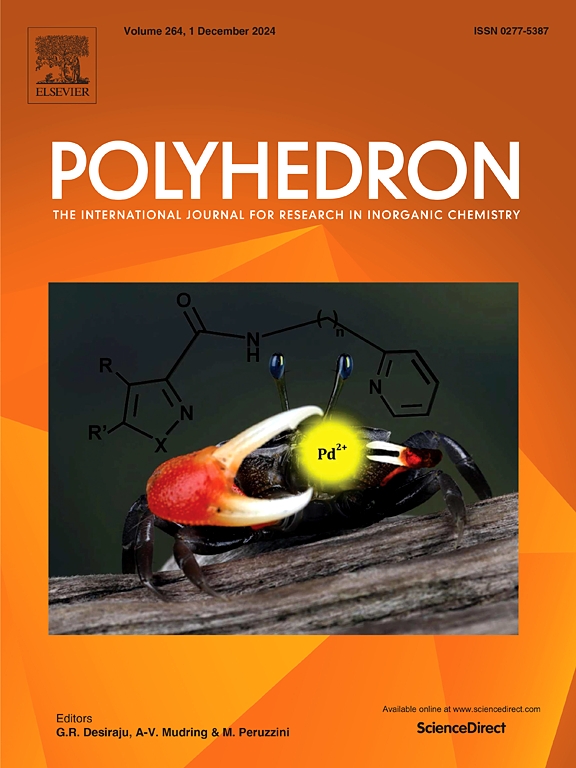磁性纳米吸附剂对桉树提取物镉的吸附研究
IF 2.4
3区 化学
Q2 CHEMISTRY, INORGANIC & NUCLEAR
引用次数: 0
摘要
本研究旨在评价从桉树提取物中提取的磁性纳米吸附剂对镉的去除效果。采用x射线衍射分析、场发射扫描电镜、能量色散x射线能谱、振动样品磁强计和傅里叶变换红外光谱对吸附剂进行了表征。研究了pH、Cd初始浓度、温度和接触时间等因素对镉吸收的影响。采用响应面法和基于自适应网络的模糊推理系统预测吸附镉的最佳条件。采用各种模型拟合动力学实验数据,并计算热力学变量。本文章由计算机程序翻译,如有差异,请以英文原文为准。

Cadmium uptake by magnetic nano sorbent on Eucalyptus extract
This study aimed to evaluate the removal of cadmium using a magnetic nano sorbent derived from Eucalyptus extract. The sorbent was characterized by X-ray diffraction analysis, field emission scanning electron microscopy, energy-dispersive X-ray spectroscopy, vibrating sample magnetometer, and Fourier-transform infrared spectroscopy. Factors affecting Cd uptake, including pH, initial Cd concentration, temperature, and contact time, were studied. Response surface methodology and an adaptive network-based fuzzy inference system were employed to predict the optimum conditions for cadmium adsorption. Various models were used to fit the kinetic experimental data, and thermodynamic variables were calculated.
求助全文
通过发布文献求助,成功后即可免费获取论文全文。
去求助
来源期刊

Polyhedron
化学-晶体学
CiteScore
4.90
自引率
7.70%
发文量
515
审稿时长
2 months
期刊介绍:
Polyhedron publishes original, fundamental, experimental and theoretical work of the highest quality in all the major areas of inorganic chemistry. This includes synthetic chemistry, coordination chemistry, organometallic chemistry, bioinorganic chemistry, and solid-state and materials chemistry.
Papers should be significant pieces of work, and all new compounds must be appropriately characterized. The inclusion of single-crystal X-ray structural data is strongly encouraged, but papers reporting only the X-ray structure determination of a single compound will usually not be considered. Papers on solid-state or materials chemistry will be expected to have a significant molecular chemistry component (such as the synthesis and characterization of the molecular precursors and/or a systematic study of the use of different precursors or reaction conditions) or demonstrate a cutting-edge application (for example inorganic materials for energy applications). Papers dealing only with stability constants are not considered.
 求助内容:
求助内容: 应助结果提醒方式:
应助结果提醒方式:


